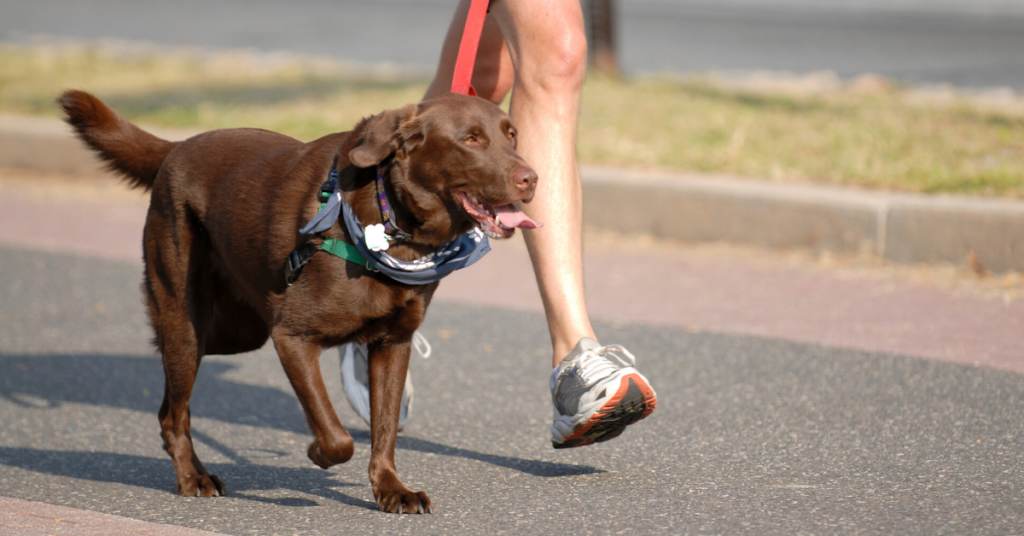What is Ataxia in Dogs?
Ataxia in dogs is a condition that describes uncoordinated abnormal movement. The word Ataxia means incoordination within the nervous system.
This abnormal movement can be in the legs, the head, the torso, or all three. This will cause the dog to wobble or have difficulty walking.
Read more to understand how this condition can affect your dog and the available treatments.
What is Ataxia in Dogs?

Ataxia is a blanket term for a lack of coordination induced by a nervous system disorder in your dog.
It is characterized by an irregular swinging stride and difficulties maintaining balance in dogs.
Ataxia is a symptom of an underlying medical issue and is not a medical condition of itself.
When veterinarians are attempting to figure out what’s causing the ataxia, it’s sometimes beneficial to know what kind of ataxia is going on.
In general, there are three types of ataxia:
Proprioceptive ataxia
Proprioception is the dog’s natural sense of where their limbs are. Proprioceptive ataxia can be caused by sensory dysfunction.
This type of ataxia is typically caused by a problem with the spinal cord, such as a tumor, a bulging disk, or a nerve problem.
Signs include eye movements that are irregular, usually moving from side to side.
Vestibular syndrome
This type of ataxia is caused by a problem in your dog’s inner ear or brainstem.
Vestibular ataxia causes dogs to stumble and fall to one side, but both sides might be affected in some cases.
Cerebellar ataxia
Problems in the cerebellum, the part of the brain responsible for movement coordination, cause this type of ataxia.
Head tremors, and excessive limb movements are common symptoms of cerebellar ataxia.
Causes of Ataxia in Dogs

Depending on where the disease is located, there could be a variety of causes for ataxia. These causes include:
- Spinal cord problems such as tumors, trauma, inflammation, and structural abnormality
- Inner or middle ear infections
- Vestibular disease
- Hypothyroidism
- Head trauma
- Canine distemper virus
- Inflammation of the brain and/or the brain stem
- Deficiency in thiamine
- Toxin ingestion
- Degenerative myelopathy
- Abnormalities in the red blood cell count
- Low levels of calcium, potassium or glucose
- Heart disease
Signs of Ataxia in Dogs

Depending on the underlying cause behind Ataxia, signs may show up suddenly, or gradually.
In some cases, it can be progressive, and become worse over time. If the dog is suffering from ataxia, they would show signs such as:
- Irregular gait
- Swaying
- Dragging one or more toes when walking, which may lead to wearing off the toenails
- Standing with feet spread apart, to help stand upright
- Head tilting to the side of the lesion, in case of vestibular ataxia
- If the ataxia is caused by a lesion in the cerebellum, the dog’s foot placement would be exaggerated, and known as “goose stepping” walk
Because ataxia is a sign of an underlying health condition that may be serious. You should consult your veterinarian, as soon as you notice any signs of ataxia.
Diagnosis of Ataxia in Dogs

Ataxia occurs for many different reasons. In order to diagnose the underlying cause, the veterinarian will do some tests.
Firstly, they will ask you detailed questions about your dog’s history that include health, behavior, and environment.
After that, they will do a physical test, where they will check the dog’s heart and lungs, take vitals, and palpate the spine and limbs.
Then, the vet may do a neurologic test, to evaluate the dog’s posture, gait, and reflexes. This exam will help the vet to know which parts of the dog’s nervous system are affected.
Finally, X-rays, ultrasounds, and in severe cases an MRI or CT scan may be needed.
In addition, blood tests can help to look for infections, inflammations, and electrolyte imbalances which may be the cause of your dog’s ataxia.
Treatment of Ataxia in Dogs

Treatment for ataxia focuses on finding and treating the underlying cause.
Some causes of ataxia in dogs can be treated or even healed with medication alone, while others may require surgery.
In extreme circumstances, such as severe infections or toxin ingestion, your dog may need to be admitted to the hospital for more intense treatment.
Your veterinarian will be able to discuss your dog’s treatment options with you once the problem that caused the ataxia has been diagnosed.
When to See a Veterinarian

If you notice that your dog is unstable, has irregular gait, swaying, or any abnormal behavior. Contact your veterinarian as soon as you can.
Ataxia can be a sign of a serious health condition, this is why early diagnosis can help in early treatment and recovery.







